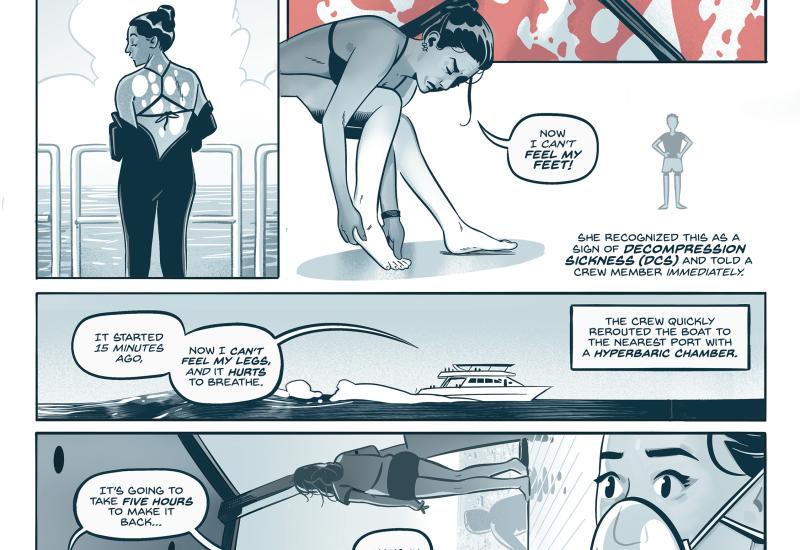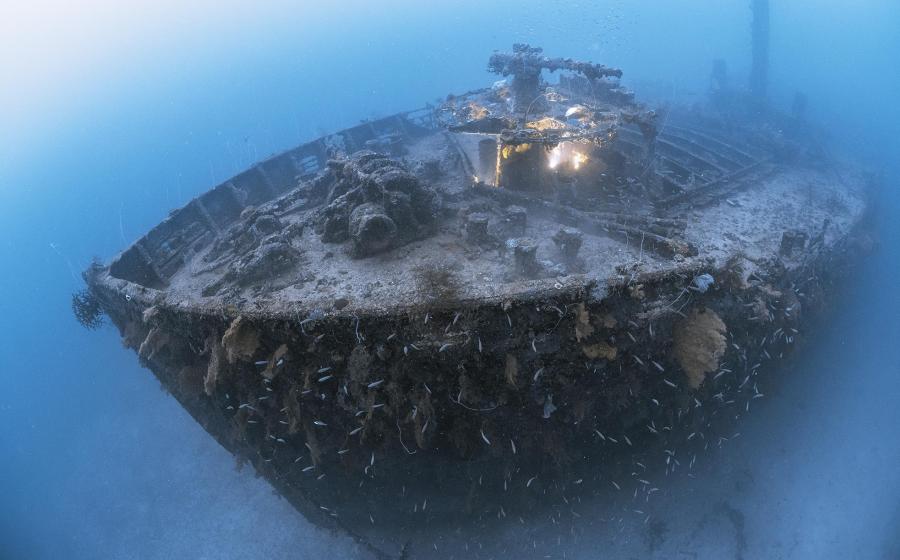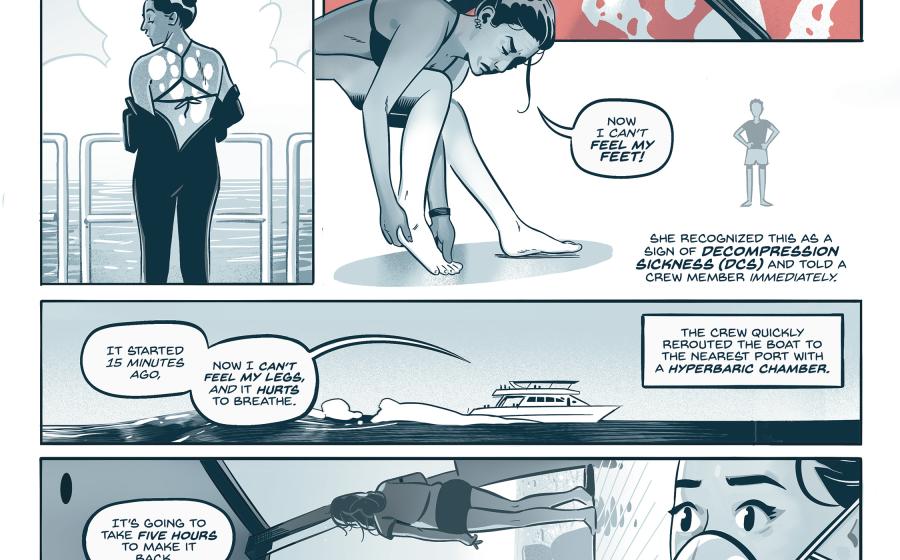The Danger of Losing Your Dive Weights

Steven P. Hughes
It only took Lill a split second to realize something was going wrong during her dive. She felt a sudden jerk and then she began rising rapidly upward. She did everything she knew to slow her ascent but ended up on the surface in just a few seconds.
The Diver
Lill was an experienced diver in her mid-40s who had made several hundred dives in many environments. She had earned many specialty dive certifications in her time as a diver, including PADI Dry Suit Diver. She was in good health and exercised regularly.
The Dive
Dive conditions were good, with only a slight swell. It was warm and sunny with water temperatures in the low 60s—typical for the area. Lill and her buddy were diving in drysuits on a local charter boat. They were wrapping up a dive with a max depth of 66 feet and bottom time of about 30 minutes. They were using dive computers and had stayed well away from their no decompression limits.
The Incident
Lill and her buddy were slowly ascending in the middle of the water column at around 20 feet of seawater when Lill felt a sudden jerking around her waist. Out of the corner of her eye, she saw her weight belt falling away from her.
Realizing the seriousness of the situation, Lill immediately dumped all the air she could from her drysuit and tried to flare out her arms and legs as best she could to slow her ascent. Her buddy tried to slow her down as well but ended up being pulled to the surface along with her.
On the surface, Lill and her buddy inflated their BCDs and regained their composure. Another diver in the group brought Lill’s weight belt to her on the surface. She attempted to put it back on. Only then did she notice that it hadn’t come unbuckled, but the strap had slipped loose from the buckle itself. She and her buddy returned to the boat on the surface without further incident.
Related Reading: The Danger of Skipping Your Pre-Dive Valve Check
Analysis
This is a scary situation that came up without warning. One moment Lill was cruising along a reef, and the next she was in trouble.
I was in a similar situation once while diving in a drysuit in California. I was in about 80 feet of water, using a fairly new BCD with integrated weight pockets, when one pocket fell out, taking about a third of my lead with it. I was able to kick hard for the bottom and catch it before I floated away, but I could have been in a lot of trouble. After that, I learned to double-check that the weight pockets are properly secured, and check them periodically while diving.
The point of this incident is twofold. As we say often, it is important to learn and practice emergency procedures. Lill’s drysuit training ensured she knew what to do in the case of a rapid, uncontrolled ascent. Had she been diving without that knowledge, things easily could have turned out far worse.
The second point of this story is to maintain your equipment. We often pay attention to the functionality of our regulators and BCDs—they are life-support equipment after all. But if Lill had taken a moment to inspect her weight belt buckle and realized the strap was coming loose from the buckle, she could have fixed it or gotten a new belt and avoided this problem completely.
Related Reading: How Your Fitness Impacts Diving
Lill and her buddy were slowly ascending in the middle of the water column at around 20 feet of seawater when Lill felt a sudden jerking around her waist. Out of the corner of her eye, she saw her weight belt falling away from her.
Diving dry generally requires more weight than a typical wetsuit dive. Many drysuit divers wear weight harnesses to spread their extra weight out and take it off their hips. In general, spreading your weight out between a weight belt, weight pockets, and trim weights makes it possible to ditch just some of your weight in an emergency without making a rapid ascent. It also makes it easier to place your weight for better positioning in the water.
The volume of air in your lungs doubles in the last 33 feet of your ascent. This is why divers learn to breathe continuously during emergency ascent training. Lill made a rapid ascent from around 20 feet and could have easily gotten herself in trouble both with decompression sickness and a lung overexpansion injury. The signs of an arterial gas embolism will show up soon after the dive, but it is a good idea to observe the diver who made a rapid ascent for a while to make sure no problems arise.
Lessons for Life
- Inspect all equipment before entering the water. This includes mask and fin straps, buckles, and weight pockets. A fin strap breaking in the middle of a dive while swimming against a current can spell trouble.
- Practice emergency techniques. Plan with your buddy to use your safety-stop time to practice skills like air sharing and mask removal and replacement. You need to know what to do in an emergency.
- Know the signs of decompression illness. Some signs are dramatic and appear quickly, while others can appear hours later. Know what to look for, and report any problems or seek medical attention.










